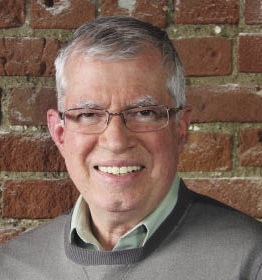Science historians who have studied the rate of inventions and discoveries say an industry’s growth can be traced on a developments-versus-time graph. It’s often called an S curve but looks more like this: _/¯ , with curved transitions. The shape suggests that an industry begins with modest development until it reaches a wider use or a critical mass which drive improvements at a higher rate.
Eventually, with most reasonable developments in place, activity levels off (the top bar) until something radically different disrupts the status quo again. You’ve seen this in computers. In the beginning, computers were so large and expensive, only governments could afford them. The personal computer changed everything (the steep upslope) and, along with the internet, fueled a flurry of changes and improvements, such as faster processors and falling costs. Then things calmed down until the laptop, smart phone, and tablet-computer industries disrupted the conventional PC industry with their frenetic pace of development. Who dreams now of a new desktop computer?
The wind industry is on a similar development curve. I would argue it is on that bottom plateau. Consider: Power outputs seem to have stalled on conventional large turbine designs at about 7 or 8 MW. News of Samsung’s 7 MW prototype and Vestas’ 8 MW unit, both in Europe, recently flashed across the internet. But why not 10 MW prototypes? About three years ago, three 10 MW turbines (Clipper, AMSC, and Sway) were reported on drawing boards and promised for delivery about now. Only Sway says it’s still working on its version. So what happened? High-weight designs and high costs happened.
Samsung reports that one blade on its 7 MW turbine tips the scales at about 35 metric tons. Going from a 7 MW turbine to a 10 MW output now seems like a giant leap. Larger outputs will require new technology, equipment without a long development history, and gutsy companies willing to be the first to put radical designs into service.
It will happen and here’s why. This magazine has reported on many significant developments over the years, but it takes about 6 to 10 years to get a good idea into production. For example, in the pipeline and ready for primetime is a heavy-lifting airship that will transport heavy wind components from factory to site less expensively than conventional trucking. (Update in the last issue). Prototypes have passed flight tests and full-scale units will fly in 2015, says the company. Lighter direct-drive generators are coming from several sources. Boulder Wind Power units are about two years from commercial availability while electrostatic generators, still in the lab, are at least six years out. These promise lighter and larger direct drive wind turbines. Deflectors for turbine blades, said to boost power outputs by 15% in moderate winds, could be available in four years. Other promising advances include space frame towers and blades, and capacity factors approaching 50%. This short list only scratches the surface of what’s coming. These will carry the industry onto the S-curve upslope with a flurry of activity.
More positive news: The cost to produce electricity is headed down in part to cheap natural gas and more productive wind turbines. Xcel Energy recently reported signing 20 year purchase agreements of $25 to $35/MWh for wind power. Demand for natural gas will drive its cost up while wind power improvements will drive its cost down. Transmission costs are another issue.
Production Tax Credit or not, the winds are blowing in the right direction and you can almost watch developments climb that S-curve.
That’s what I think. What do you think? WPE
Filed Under: News





